Home mycology: how to grow oyster mushrooms at home
Growing mushrooms at home is an interesting and educational process. Mushroom pickers love to experiment and watch the process. The growth of mushrooms at home occurs quite quickly, the moment of inception is especially interesting, when everything starts with the mycelium and ends with fragrant fruits. The whole process can be traced, the mushroom picker has no limit to the joy when it comes time to harvest.
One of the most common types of mushrooms grown at home is considered oyster mushrooms... They are unpretentious and, subject to all growing conditions, give a good harvest. Let's figure out how to grow oyster mushrooms at home and what needs to be done for this.
Content:
- Description of the mushroom oyster mushroom
- Creation of growing conditions
- Substrate preparation
- Seed preparation and planting
- Mushroom care
- Harvesting
Description of the mushroom oyster mushroom
The mushroom belongs to the Veshenkov family and grows wild everywhere. It prefers to grow on stumps of deciduous trees in temperate forests. Rarely settles on fallen trees of coniferous trees. The color of the fungus is changeable - from a light gray to brown or yellowish. The color of the caps often depends on the degree of light and growing conditions.
Oyster mushrooms do not grow one by one, it is always a group in which there can be up to 30 mushrooms at a time.
The mass of one such bunch can reach 2-3 kg. Oyster mushrooms are considered one of the most unpretentious types of mushrooms, it is cold-resistant, so oyster mushrooms are harvested until October-November, depending on the region.
Oyster mushroom is a healthy and tasty mushroom:
- Its chemical composition includes such substances as potassium, iron, copper, calcium, sodium, phosphorus and many other elements useful for the body.
- The mushroom contains polyunsaturated fatty acids, which are so necessary for humans, as well as vitamins B, PP, C, E.
- Oyster mushrooms are a part of dietary meals.
- Recommended for people with gastrointestinal problems. However, children and the elderly should eat mushrooms with caution and in moderation.
Oyster mushroom has a pleasant taste, raw has anise aroma. It is considered a delicacy in Europe and the USA. Mushroom pickers grow oyster mushrooms at home and sell them with success.
Creation of growing conditions
For the successful cultivation of oyster mushrooms, it is necessary to create suitable conditions for them. Mushrooms love high humidity (from 85% to 95%), darkness and cleanliness:
- Cleanliness means the absence of mold and other microbes and bacteria.
- Another important condition is the temperature regime. At the first stage of the growing season, the temperature must be kept at least 20 °. After the appearance of filaments or hyphae, the temperature is slightly reduced, to 18 °, and the room is illuminated with not bright light.
- It is very important to create good ventilation, otherwise mold will appear in conditions of high humidity. Many mushroom pickers grow oyster mushrooms in basements, where suitable conditions are created.
Temperature, humidity and room hygiene are the main requirements for mushroom growing. If you plan to grow oyster mushrooms for sale, it is more expedient to invest a little in the arrangement of a separate room with the necessary equipment to maintain high humidity and temperature conditions. In this case, the harvest will be generous, and the growing process can be put on stream.
Substrate preparation
The substrate for the oyster mushroom is selected according to its habitat in nature - wood. More often mushroom pickers are gaining sawdust and plant the mycelium in a bag of sawdust. But mycologists still advise to abandon the use of sawdust, as mold often appears in them.Instead of sawdust, it is better to take straw or hay. It is in these substrates that oyster mushrooms are grown. For cooking, mix straw, hay and sunflower husk in equal proportions.
Before mixing the ingredients of the substrate, they must be disinfected.
For this, straw and hay are poured with warm water and put on a slow fire. Bring to a temperature of 70 ° -80 °, turn off the fire and cool the mass to a temperature of 35 °. The water is drained, the substrate is slightly dried.
The sunflower husk should already be ready by this time. Its disinfection is slightly different. The ingredient is also poured with water and brought over low heat to a temperature of 90 °. Then they are removed from the heat and cooled to 35 °. Strain and mix with the rest of the straw and hay. Mycelium can be planted in a prepared, warm substrate.
Seed preparation and planting
Mycelium is usually purchased from specialized stores or oyster mushrooms. It is rather difficult to prepare seed material yourself. This process boils down to placing pieces of oyster mushroom caps in a special solution, which is prepared from chopped pieces potatoes and agar powder. All this is infused in a warm, dark room until the mycelium appears.
Then this mixture, together with the mycelium, is planted in the substrate. This process is laborious, requiring special skills and experience. Therefore, it is easier to purchase ready-made seed material. Fortunately, it is stored for quite a long time, up to six months, in the refrigerator - a section for storing vegetables. Purchased mycelium does not require any preparation. The main thing is to properly prepare the substrate, thoroughly disinfect it and cool it to the desired temperature.
Planting mycelium:
- It is customary to grow oyster mushrooms in large plastic bags - briquettes.
- The container is filled with substrate and mycelium to the top.
- The packaging process is reduced to laying out layers. Place the first layer of substrate on the bottom of the bag, on which the seed is. Then the substrate follows again, the mycelium is again laid on it. The bag must contain at least 12 layers.
- How to calculate the seed quantity? Calculated as follows - the entire mass of the substrate should account for 5% of the mycelium. Based on this, calculate the amount of mycelium in the layers.
Experienced mushroom pickers who have been growing oyster mushrooms for a single year recommend concentrating most of the seed closer to the walls of the bag. So the development is faster. After the bag is full, tie it on top and store it in a warm, dark place. Usually this is a basement, where there is high humidity and an acceptable temperature regime - at least 22 °.
Too high temperatures will destroy the mycelium. Bags can be stacked in piles, in places free from contact with other bags, cross-shaped slots are made, from which mushrooms will grow. During the development of hyphae, the light does not need to be turned on.
Mushroom care
The white mass of mushrooms begins to wrap the bag through the cut holes at day 20, ± 2 days. Until this happens, you cannot turn on the light and ventilate the basement. Treat the room with disinfectants to avoid mold. As soon as the briquette is covered with a white mass, you can turn on the light and start looking after the mushrooms.
The process boils down to maintaining high humidity.
To do this, the mushrooms are moistened from a spray bottle with warm, settled water. The light is turned on for 10 hours, no more. The room begins to ventilate, and the temperature is lowered to 18 ° -20 °. It is also necessary to monitor the appearance of mold, this cannot be allowed. Always disinfect walls, ceilings, and floors.
Keep in mind that oyster mushrooms ripen very quickly. After the appearance of a white, shapeless mass, it will only take a couple of weeks when the mushrooms appear. They can already be collected.
Harvesting
As soon as full-fledged mushrooms have formed, they are carefully removed by twisting the legs.It is very important not to introduce infection when harvesting. You can use a knife, which must be treated with medical alcohol. After harvesting the first crop, continue to care for the briquettes. Maintain the desired temperature, 18 ° -22 °, ventilate the room and turn on the lights for 10 hours. Clean the room, keep it clean. After a couple of weeks, a second crop is harvested. Be sure to harvest on time, otherwise the mushrooms will become hard and not suitable for human consumption.
The optimal mushroom size is 7 cm in height.
When this size is reached, the oyster mushroom cluster can be carefully removed. Four crops can be harvested from one bag. After that, the substrate is replaced with a fresh one, the mycelium is planted again and the whole growing process is repeated. The only difficulty in growing oyster mushrooms for beginner mushroom pickers is to create the right conditions in the room. But as soon as the essence is mastered and the mushroom picker understands what conditions the mushrooms need, the process will go quickly and smoothly.
Growing oyster mushrooms is a pretty gamble business. Mushrooms are like living things that react to the slightest changes in temperature and humidity. Therefore, you need to be patient and observe the development process. By and large, if the mushroom picker has a suitable room, growing oyster mushrooms will not require large expenses. In summer, you can grow oyster mushrooms in the garden. For this, the seed is planted in stumps or logs. The mycelium is covered with sawdust or straw. After three months, you can harvest. True, there will be only one. In rare cases, two crops of oyster mushrooms mature in the gardens. Growing methods can be successfully combined - in the winter in the basement, in the summer in the garden. So, the mushroom picker will always have aromatic, mushroom dishes on the table!
More information can be found in the video:



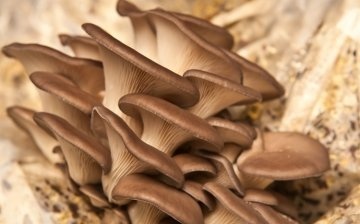

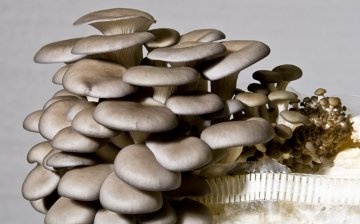
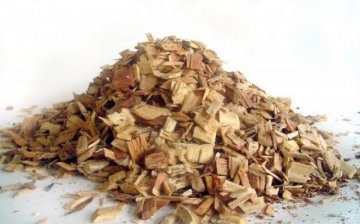
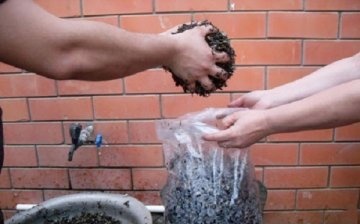
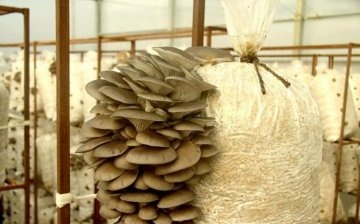
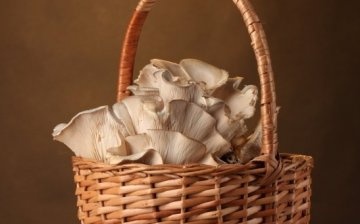








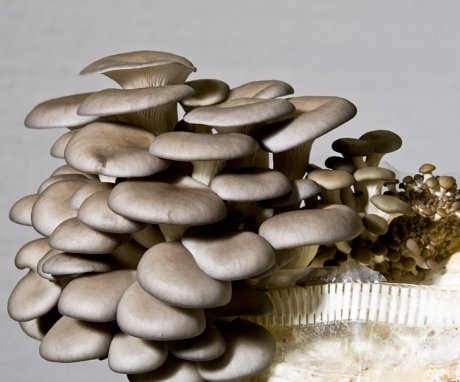
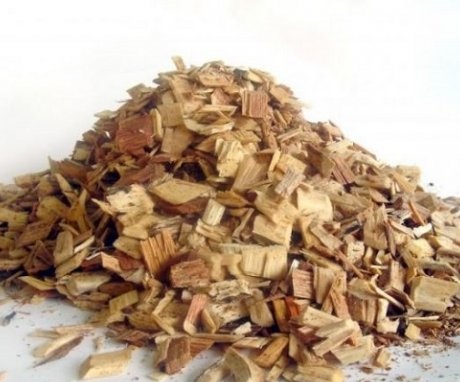
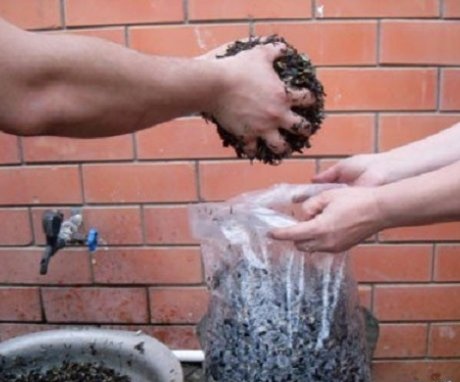

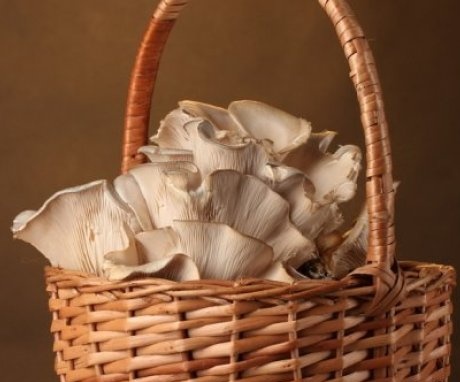
I don’t dare to grow at home, but oyster mushrooms grow in large quantities in the garden. Mainly on old, no longer fruiting plum trees. Because of oyster mushrooms, I don't cut them down. Does anyone else grow up like this?
I always wanted to grow these mushrooms in the open air, in the country, but it doesn't work out for various reasons. And I don't like those mushrooms that are obtained when growing oyster mushrooms indoors. The resulting product has no mushroom odor and taste,